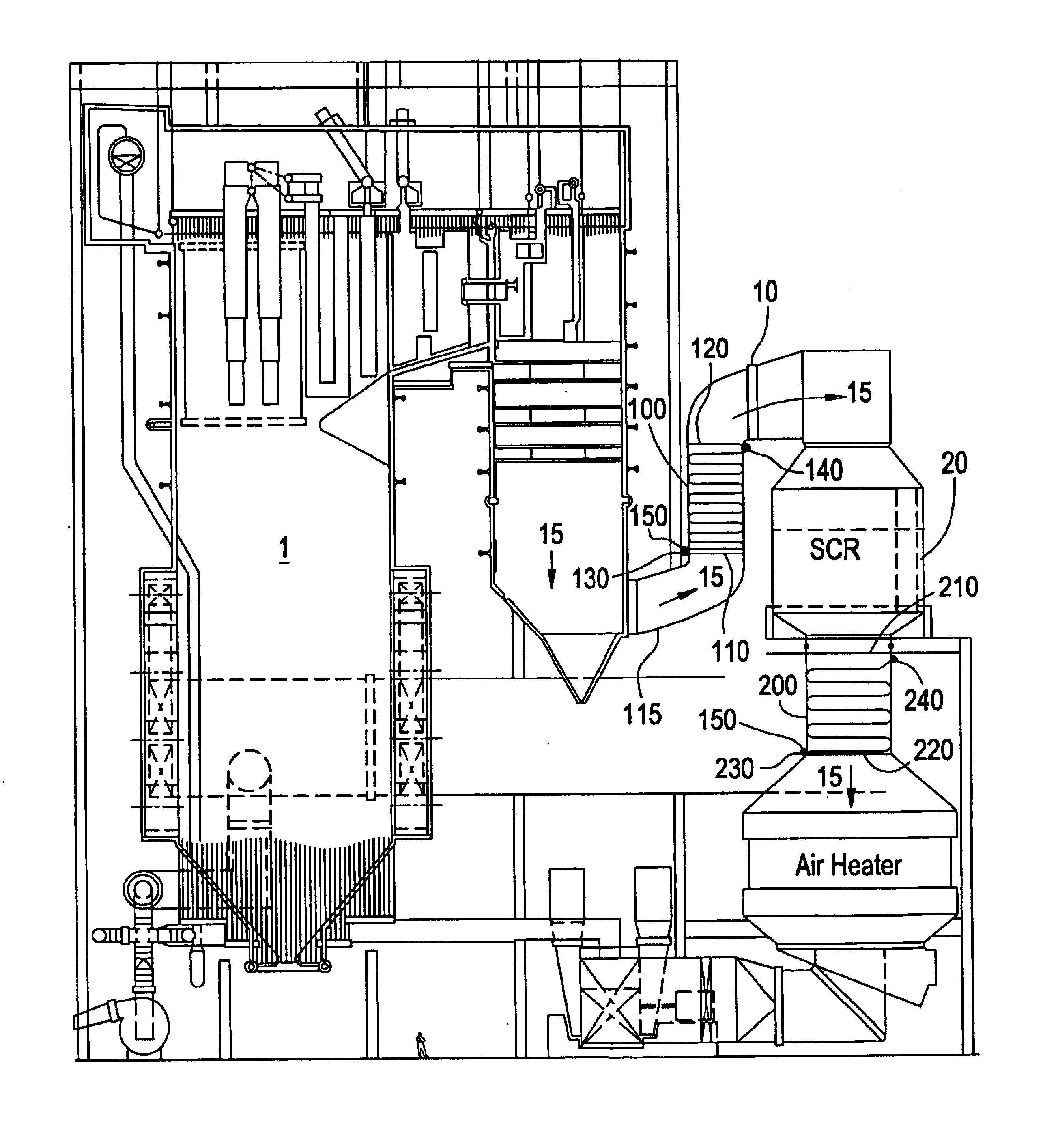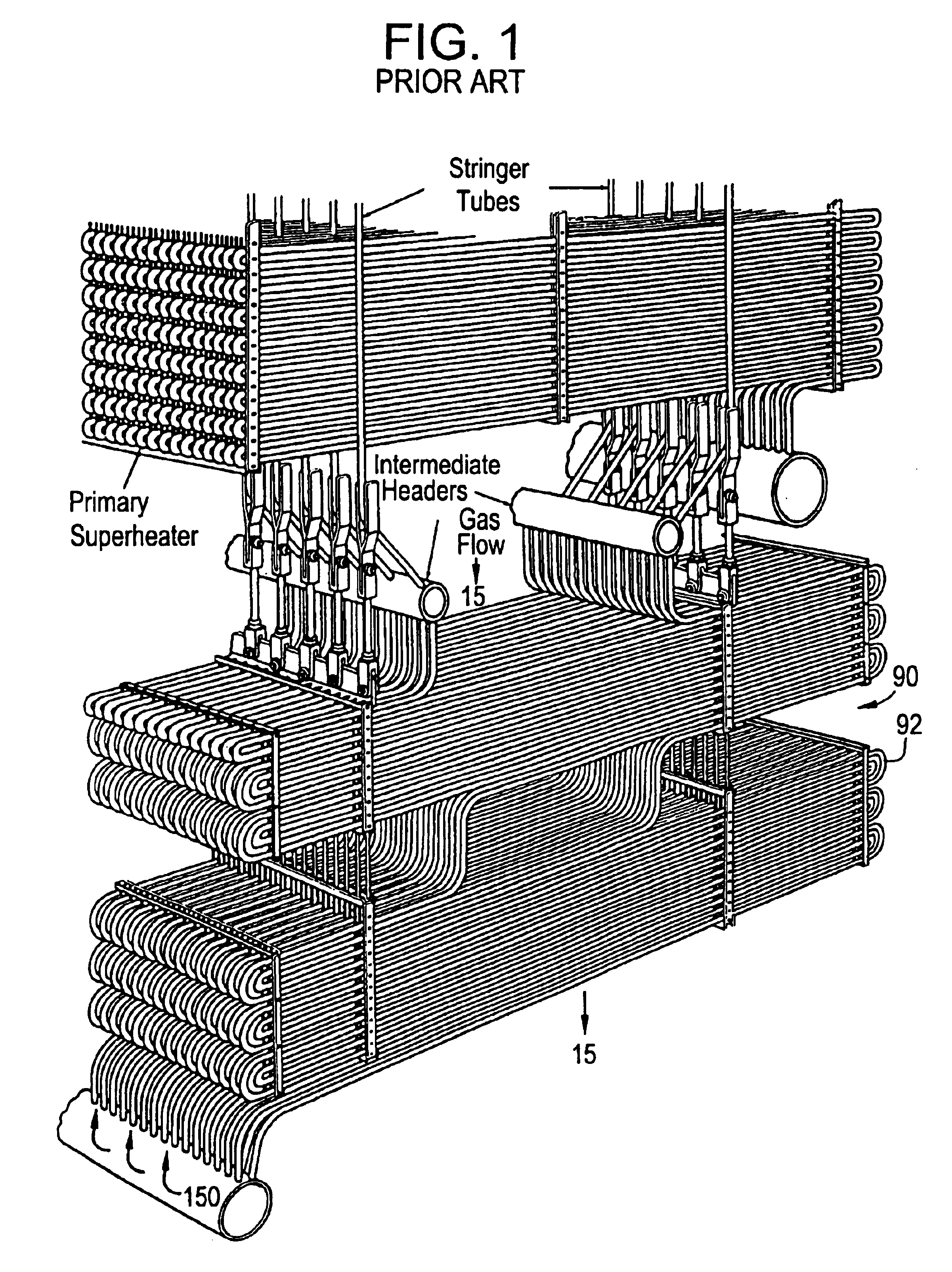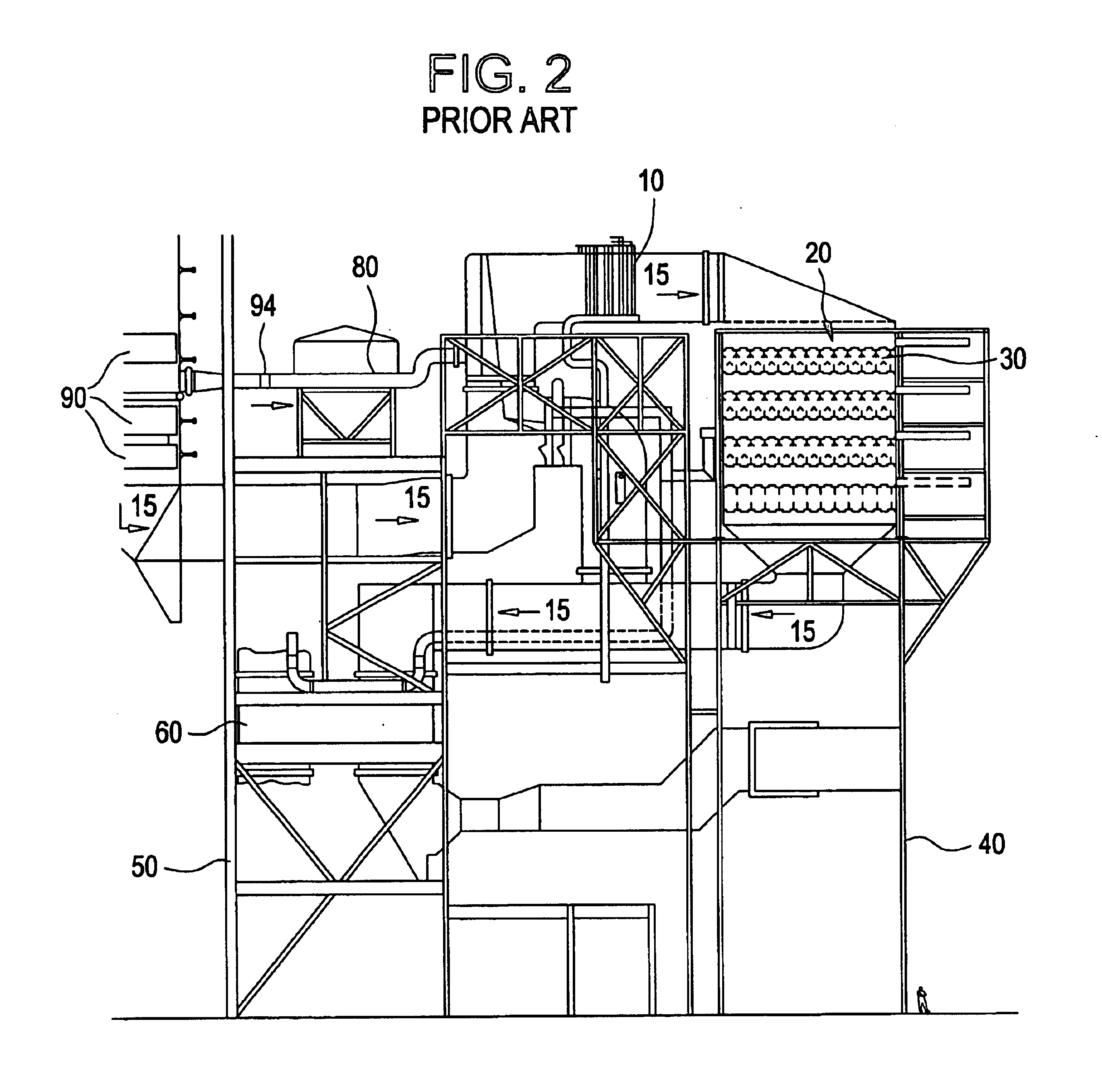Passive system for optimal NOx reduction via selective catalytic reduction with variable boiler load
a catalytic reduction and selective technology, applied in the direction of combustion types, flue gas purification components, separation processes, etc., can solve the problems of large heat transfer surface area, many catalyst materials become less effective or fail to perform the intended function, and further restrict flue gases containing sulfur oxides, etc., to achieve efficient removal of nitrogen oxides and improve thermal efficiency
- Summary
- Abstract
- Description
- Claims
- Application Information
AI Technical Summary
Benefits of technology
Problems solved by technology
Method used
Image
Examples
Embodiment Construction
[0026]Referring to FIG. 3, flue gas or exhaust gas 15 produced in a boiler 1 and containing nitrogen oxides flows into flue 115. Flue 115 provides the flue gas 15 to a selective catalytic reduction reactor 20, as is known in the art. Reactor 20 contains layers of commercially available nitrogen oxide reduction catalyst 30, such as oxides of titanium (TiO2), vanadium (V2O5), tungsten (WO3) and molybdenum (MoO3). Catalyst 30 is effective within a required temperature range defined by an upper limit temperature, or first temperature and a lower limit temperature, or second temperature lower than the first temperature. An ammonia injection system 10 injects ammonia or ammonia precursors into the flue gas 15 before the flue gas 15 enters the reactor 20, where nitrogen oxide reduction reactions take place.
[0027]A first economizer 100 is installed in flue 115 in fluid communication with reactor 20 in a location upstream of reactor 20 with respect to the flow direction of the flue gas 15. F...
PUM
| Property | Measurement | Unit |
|---|---|---|
| energy | aaaaa | aaaaa |
| temperature | aaaaa | aaaaa |
| thermal efficiency | aaaaa | aaaaa |
Abstract
Description
Claims
Application Information
 Login to View More
Login to View More - R&D
- Intellectual Property
- Life Sciences
- Materials
- Tech Scout
- Unparalleled Data Quality
- Higher Quality Content
- 60% Fewer Hallucinations
Browse by: Latest US Patents, China's latest patents, Technical Efficacy Thesaurus, Application Domain, Technology Topic, Popular Technical Reports.
© 2025 PatSnap. All rights reserved.Legal|Privacy policy|Modern Slavery Act Transparency Statement|Sitemap|About US| Contact US: help@patsnap.com



